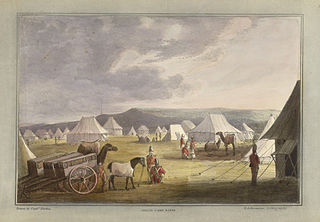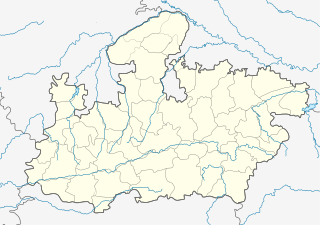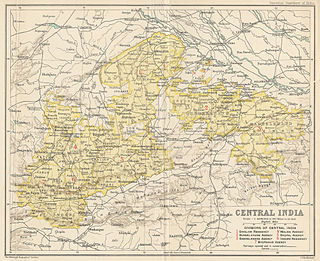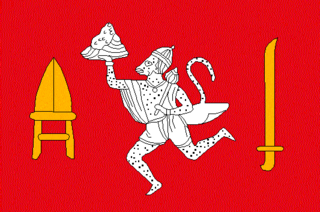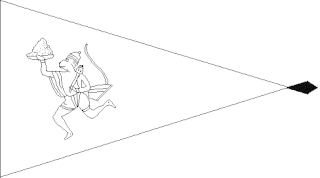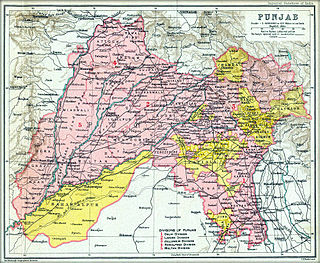| Bhopal Agency | |||||
| Agency of British India | |||||
| |||||
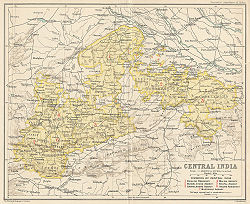 | |||||
| History | |||||
| • | Established | 1818 | |||
| • | Accession to the Indian Union | 1947 | |||
| Area | |||||
| • | 1901 | 30,181 km2(11,653 sq mi) | |||
| Population | |||||
| • | 1901 | 1,157,697 | |||
| Density | 38.4 /km2 (99.3 /sq mi) | ||||
The Bhopal Agency was a section of British India's colonial Central India Agency, a British political unit which managed the relations of the British with a number of autonomous princely states existing outside British India. [1]

The Central India Agency was created in 1854, by amalgamating the Western Malwa Agency with other smaller political offices which formerly reported to the Governor-General of India. The agency was overseen by a political agent who maintained British relations with the princely states and influence over them on behalf of the Governor-General. The headquarters of the agent were at Indore.

A princely state, also called native state, feudatory state or Indian state, was a vassal state under a local or regional ruler in a subsidiary alliance with the British Raj. Though the history of the princely states of the subcontinent dates from at least the classical period of Indian history, the predominant usage of the term princely state specifically refers to a semi-sovereign principality on the Indian subcontinent during the British Raj that was not directly governed by the British, but rather by a local ruler, subject to a form of indirect rule on some matters. In actual fact, the imprecise doctrine of paramountcy allowed the government of British India to interfere in the internal affairs of princely states individually or collectively and issue edicts that applied to all of India when it deemed it necessary.
Contents
| Princely state |
|---|
| Individual residencies |
| Agencies |
|
| Lists |
